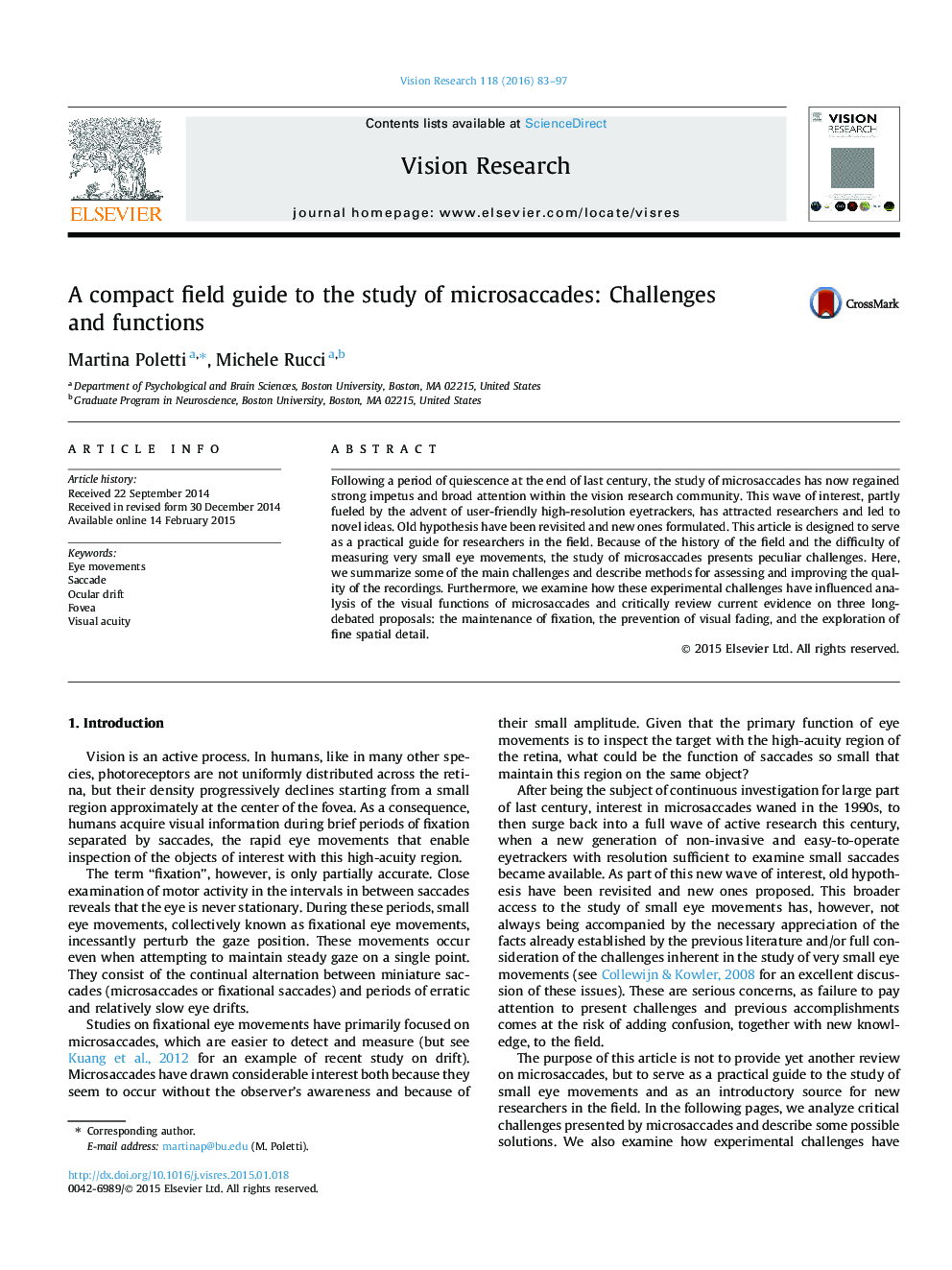| Article ID | Journal | Published Year | Pages | File Type |
|---|---|---|---|---|
| 4033583 | Vision Research | 2016 | 15 Pages |
•Progress has been hindered by measurement artifacts and unnatural viewing conditions.•The characteristics of commercial eye trackers should be evaluated more rigorously.•During natural viewing, microsaccades precisely move a high-acuity retinal locus.•Microsaccades and saccades serve similar visual functions.
Following a period of quiescence at the end of last century, the study of microsaccades has now regained strong impetus and broad attention within the vision research community. This wave of interest, partly fueled by the advent of user-friendly high-resolution eyetrackers, has attracted researchers and led to novel ideas. Old hypothesis have been revisited and new ones formulated. This article is designed to serve as a practical guide for researchers in the field. Because of the history of the field and the difficulty of measuring very small eye movements, the study of microsaccades presents peculiar challenges. Here, we summarize some of the main challenges and describe methods for assessing and improving the quality of the recordings. Furthermore, we examine how these experimental challenges have influenced analysis of the visual functions of microsaccades and critically review current evidence on three long-debated proposals: the maintenance of fixation, the prevention of visual fading, and the exploration of fine spatial detail.
